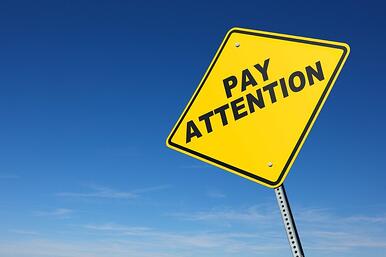
It's the gospel of productivity in a maxed-out world: Multitasking helps you get more done faster. The only thing is, it doesn't, says David Meyer, a cognitive scientist at the University of Michigan, where he serves as director of the Brain, Cognition and Action Laboratory.
"When you perform multiple tasks that each require some of the same channels of processing, conflicts will arise between the tasks, and you're going to have to pick and choose which task you're going to focus on and devote a channel of processing to it," explains Meyer, one of the country's leading experts on multitasking.
Meyer has been at the forefront of research for several decades on how the brain processes information and copes with multitasking. He has investigated the brain's speed, accuracy and memory in information processing while working with psychologist David Kieras for the Office of Naval Research. A study Meyer co-wrote on the limitations of multitasking ("Executive Control of Cognitive Processes in Task Switching") went viral in 2001, setting off the first awareness of the counterproductivity of simultaneous tasks.
Meyer's work has documented that humans have distinct bandwidth challenges, which makes multitasking problematic. It turns out the brain's ability to process information is limited in a variety of ways—from processing channels to limits on data volume, velocity and working memory—that stymie true, simultaneous activity. Multitasking multiplies only frustration.
MENTAL BROWNOUTS
Counter to conventional wisdom, you can't do two high-cognitive tasks at once, Meyer says. When you're on the phone and writing an e-mail at the same time, you're not doing them at the same time. You're actually switching back and forth between them, since there's only one neural channel through which language flows. In that switching there's a cost: stress, as your brain neurons try to get themselves around the new task or where you were on the primary task each time you switch.
"If you have a complicated task, it requires all your attention, and if you're trying to spread your attention over multiple tasks, it's not going to work," he says.
That's heresy in a time-urgent world with the attention span of a macaque on crack. Meyer admits that multitasking is not only getting more prevalent, but it's also "very often highly inefficient and can be dangerous to your health."
Multitasking kicks thoughts down from the top floors to rote mode, where you don't have full attention on what you're doing, triggering mistakes and surface understanding. You wind up on autopilot in a retaliatory pattern of acting before you think.
Even the most adept multitasker will "crash and burn" trying to resolve simultaneous conflicting demands, Meyer says. That means you could wind up sending the wrong e-mail; blow an account; have a brownout in which too much access to the cerebral grid shuts down critical thinking; or worse, find yourself in a truly hazardous situation, such as driving while using a cell phone.
"When you're driving, you have to use the language channel to talk, read signs, plan your next move. If you're trying to have a cell phone conversation while you're doing that, either the phone conversation will suffer or the driving," Meyer says. He points to the growing number of auto accidents caused by people sending texts from behind the wheel.
SIMULTANEOUS INATTENTION
The conflicts triggered by incessant multitasking can set off chronic stress and slow you down, shredding productivity. In fact, trying to complete two or more tasks at once can take 40 percent more time or longer, depending on the complexity of the task, Meyer says.
Performance isn't the only thing that suffers when brains are overwhelmed by multiple tasking. Creativity and innovation don't come from people who are multitasking. "You ought to be setting aside large chunks of time where you just think," Meyer says. "Einstein was not multitasking when he was dreaming up the special and general theories of relativity."
The good news is that there is hope for the attention-span-challenged, in the form of self-regulation through better time management and scheduling. "If you're disciplined enough, you can map out the usage of your time in a way that minimizes your exposure to interruptions," Meyer explains.
To improve attention and productivity, you have to shift the idea of multitasking from simultaneous to alternating tasks. You do one task for a while, then another task. Unless you prefer the mistakes, meltdowns, and overwhelm of trying to do what your brain can't.
If you'd like to get multitasking, interruptions, and information overload under control for your team or office, visit our time management or information management pages, or click the button below for details on our Managing Crazy Busy Workload or Email/Information Overload training programs.





















